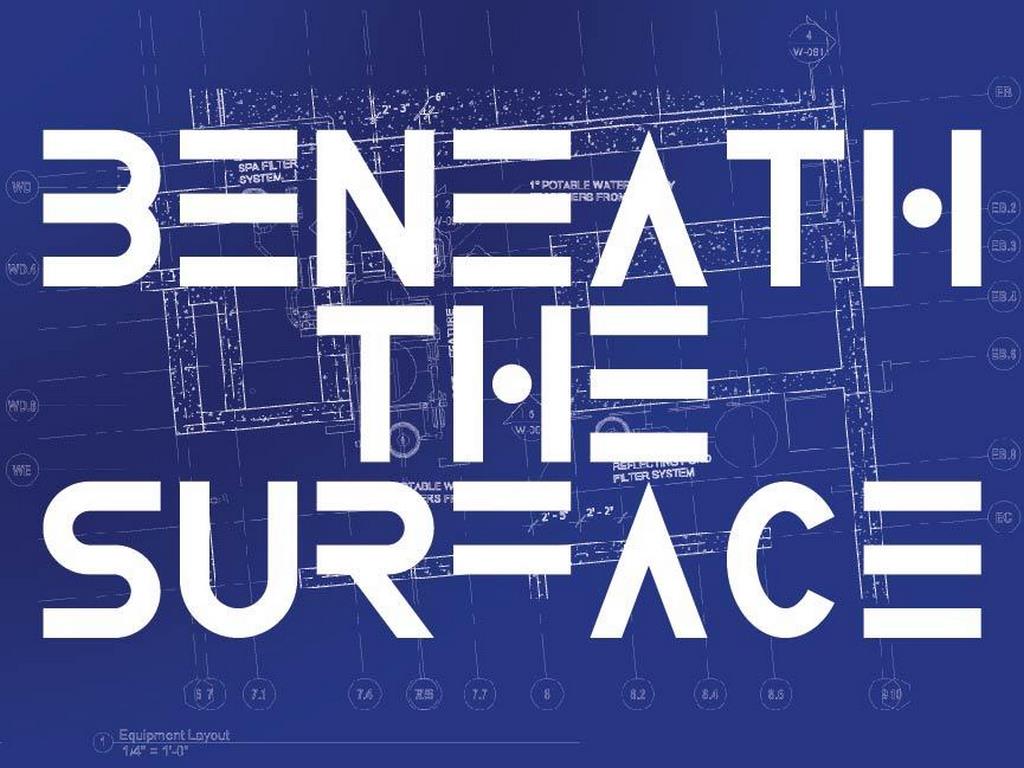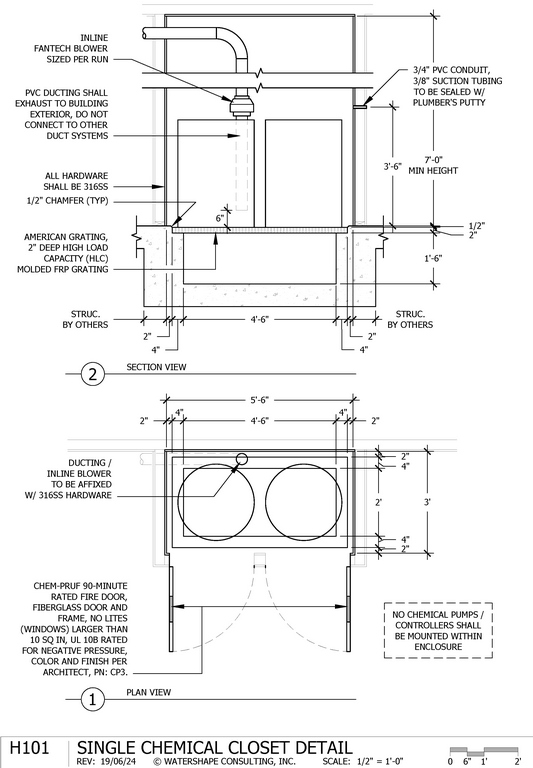Detail: H101

 Safe and secure chemical storage is a key consideration for commercial watershape facilities, or any aquatic setting where chemicals are kept in large quantities. This handy detail from Dave Peterson addresses the list of concerns and issues that arise from the need to store and control potentially hazardous chlorine and acid supplies.
Safe and secure chemical storage is a key consideration for commercial watershape facilities, or any aquatic setting where chemicals are kept in large quantities. This handy detail from Dave Peterson addresses the list of concerns and issues that arise from the need to store and control potentially hazardous chlorine and acid supplies.
Commercial watershapes generally demand more attention to a variety issues, including the need to store chemicals, typically chlorine and muriatic acid, among other potentially harmful materials.
Factors such as health department oversight, the need to protect employees and patrons from exposure, the logistics of handling chemicals, fire prevention, and even security concerns all motivate architects and watershapers to dedicate storage rooms or closets to storing chemicals.
In our work, commercial projects sometimes have fairly substantial chemical storage facilities, including large tanks that are filled by mobile trucks in dedicated rooms. Smaller facilities might simply use 55-gallon drums or 15-gallon carboys usually located somewhere proximate to the equipment set.
This detail is for those smaller commercial facilities. I also see this smaller version creeping into large high-end residential projects where commercial-size volumes of chemicals are needed.
A SAFE DRY PLACE
Corrosivity of fumes from both chlorine and acid can eat away at an otherwise beautiful equipment room. Galvanized steel conduits and electrical boxes turn to rust and the damage can even result in failed relays, timers and transformers.
This is another reason for keeping the chemical pumps located outside of the storage closet.
Key points include:
• Ventilation is important – note that the blower pushes air out of the closet, keeping a negative pressure inside.
• The pit below is for secondary containment of a spill or failed storage container.
• Fiberglass doors and 316 SS hardware are a must.
• Importantly, chemicals should never be mixed. Typically, at least two storage rooms are required to keep chlorine and acid from mixing.
David J. Peterson, P.E, IWI, is co-founder of Watershape University and president of Watershape Consulting, Inc. For additional assistance with this detail he can be reached at [email protected]









